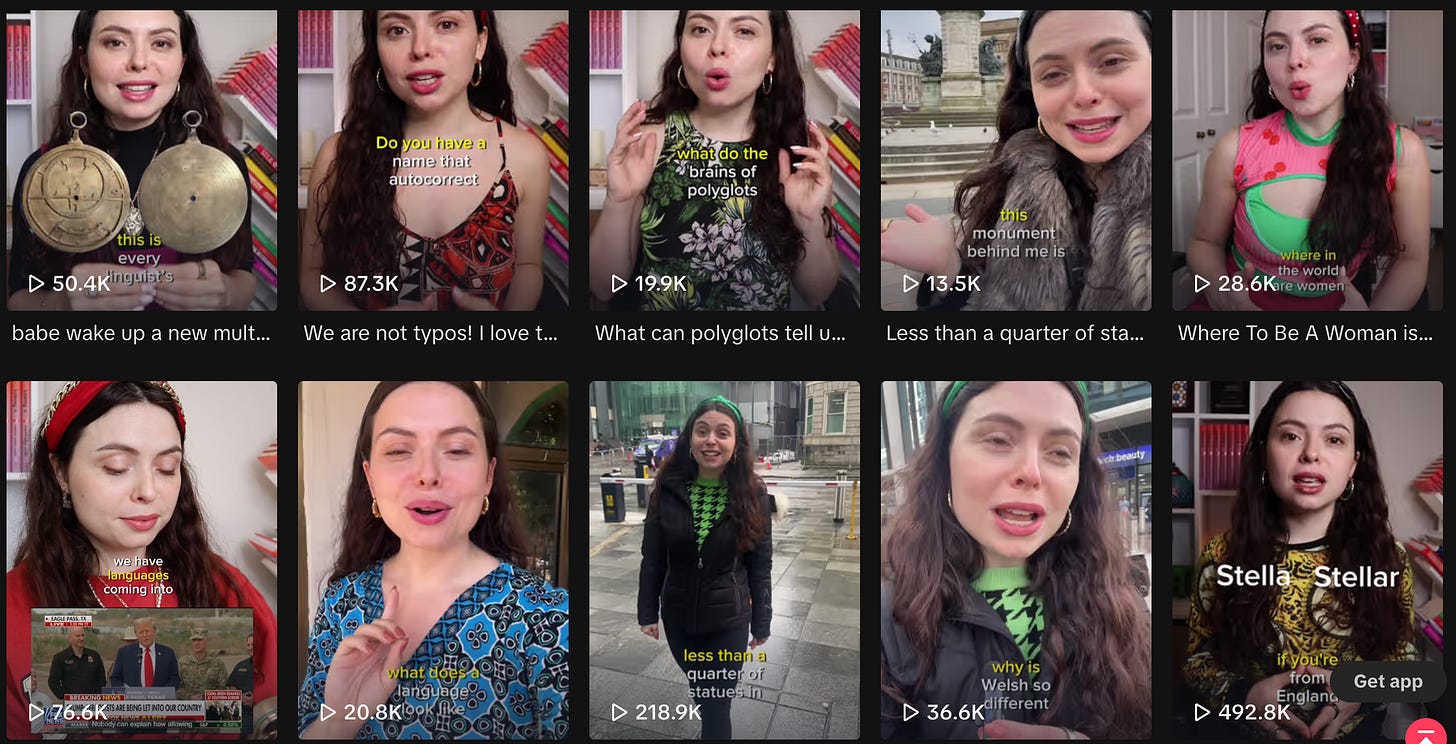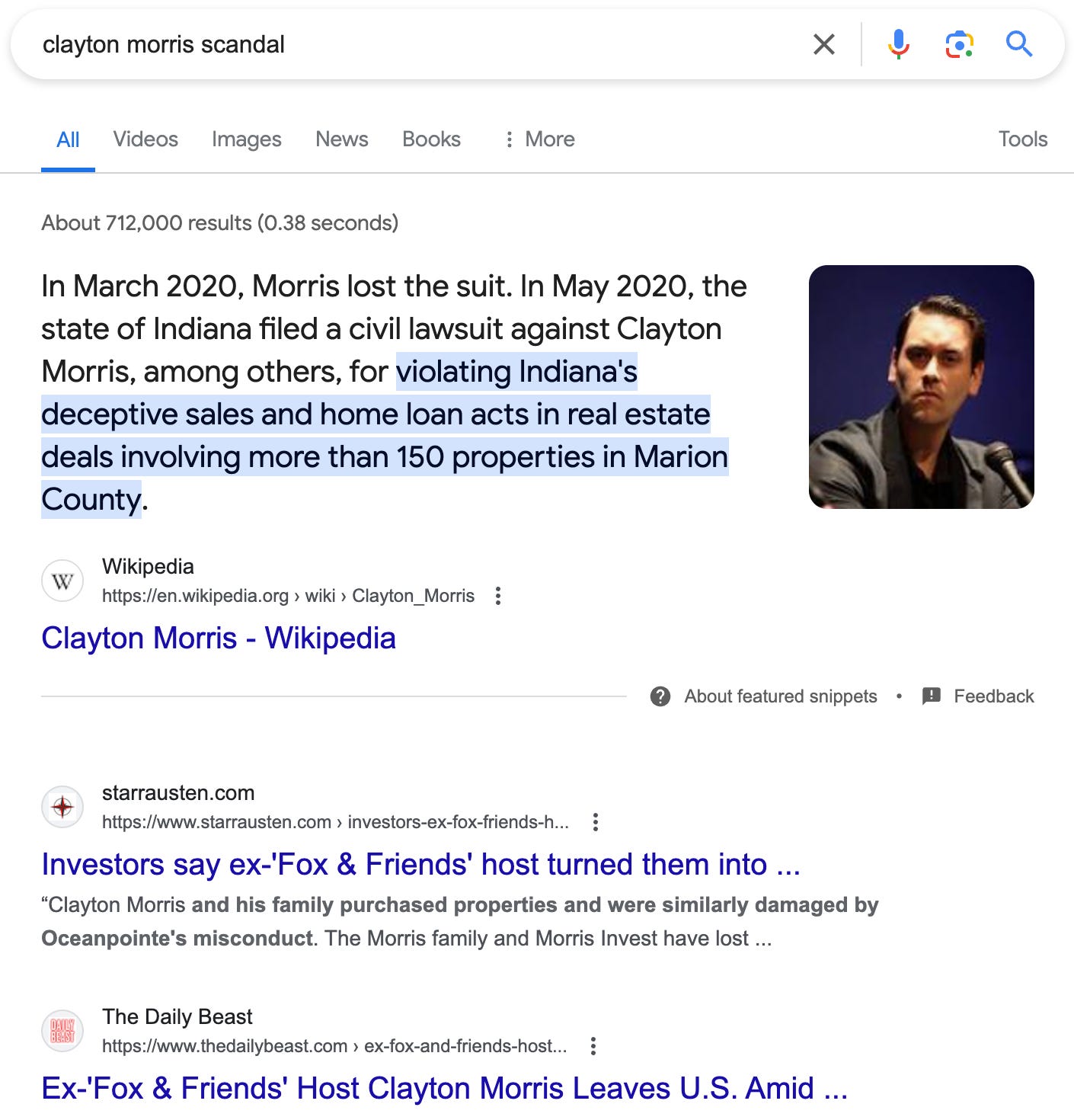A Red Flag System 🚩
For quickly assessing a social media account's trustworthiness/authenticity/reliability
It’s a source of amusement that I can’t scroll far on Instagram or TikTok without seeing a post on dating red flags versus green flags, but essentially no social media content exists for how to evaluate other social media content. How do we know whether it’s a good idea to “date” a news account, in other words follow it and generally trust what it publishes?
Just like there are “tells” from someone’s behavior on a date, there are flags on accounts that can point toward the likelihood that you’re about to enter into a relationship with someone who will cheat on you and skip family Thanksgiving—or with someone who is going to cook you waffles on Sunday mornings and massage your feet.
If I come across a video or post on social media and there isn’t something blatantly false or suspicious about it, and if I don’t recognize the handle (the creator or account who published the content), I use this red flag, green flag system.
Because it’s a creator-based assessment system—it doesn’t go into a creator’s actual content, which in my opinion is a trickier evaluation process to explain—it avoids some of the polarization and politicization that goes along, for the average consumer, with the news these days. It’s not meant to be perfect, but it gives me a snapshot of what I’m dealing with, and it doesn’t require any special skills. Anyone should be able to do it, and fast.
Let’s review three TikTok accounts with big followings and see where our red flag, green flag system takes us.
The Contenders:
Max Foster - 1.2M followers on TikTok - “news guy
”
 Tiktok failed to load.
Tiktok failed to load.Enable 3rd party cookies or use another browser
Sophia Smith Galer - 530k followers - “journalist, author”
Clayton Morris - 1.3M followers - “journalist & investor”
 Tiktok failed to load.
Tiktok failed to load.Enable 3rd party cookies or use another browser
I chose them because they are all accounts with big followings. Foster and Galer were served up to me at different points by TikTok’s algorithm. A friend of mine sent me one of Morris’ videos. So they all arrived organically; I didn’t go looking for them.
I’m using their TikTok accounts as examples, but you can apply these rules to most other social media platforms.
Flag #1:
Is the person associated with a major news outlet or do they have an easily verifiable history as a working journalist?
Max Foster has CNN in his handle name and their account tagged in his bio, something I imagine CNN would not let stand for the years that Foster has been posting on TikTok if he weren’t really representing the network. He is also easily findable on CNN’s website. Green flag.
Sophia Smith Galer doesn’t have any affiliation listed, but she has a Linktree in her bio that leads to her personal website. She was a reporter at VICE News and the BBC, has written a book, is the recipient of many journalism awards, etc. Her work is all linked to. Green flag. (NB: She has a recent announcement on her TikTok that she is now freelance.)
Clayton Morris doesn’t have any listed affiliations in his bio or any links. I always assign a “no-link, no-tag” bio as a temporary orange, because it means that the user has to go off-platform to verify the person’s identity.
Which I did. If you Google Morris, and check out his Wikipedia page, you’ll see that he was a TV anchor on Fox News until 2017. That’s fine for our red flag/green flag purposes, but if you want to go the extra mile, you can check to see if there is archival footage on Fox’s site with Morris in it. Here he is talking about Black Friday deals circa 2017. I’ll give him a green flag, then, for his journalism background.
Now, you may have opinions about the quality of those various news networks, and that’s fine. But we are keeping things simple for now, as there is a difference between accounts with verifiable people and accounts without.
These accounts are all real people with real journalistic experience. In contrast, I always mentally assign a red flag if I find news accounts that are essentially anonymous. The creator doesn’t show their face, the handle doesn’t include a name, and there is no biographical information or history listed. Here is an example. That’s a “my date has a history of domestic abuse” category offense. Immediate disqualification.
Flag #2:
Do their numbers make sense?
Everyone knows that follower counts aren’t always what they seem. Especially since social media platforms will allegedly punish you algorithmically for buying followers, seeing whether an account’s engagement matches its following is something I have done since the advent of social media as a check on whether I can trust that person on the most basic of their social media pillars.
To do it, cast your eye over the view counts on recent videos. On TikTok, skip any pinned videos (they have a red “pinned” banner at the top and are the first one to three videos on the account) as they are often the ones that have gone viral or are introductions.
For this step, I’ll wait to assign the flags until the end.
Here are Foster’s recent view counts. There are big fluctuations, of course, which is normal on TikTok. Altogether, though, the numbers are fairly stable—there aren’t any videos below the high tens of thousands. These large numbers are what you would expect from an account with over a million followers.
Here are some of Galer’s. Again, fluctuations, but a stable range, and the view counts make sense when compared to Foster, who has double the following Galer does.
And here is Morris. Catch anything odd? His numbers fluctuate, too, but a reminder that he has 1.3M followers, versus Foster’s 1.2M. Why are his view counts so low in comparison? Why are they much lower than Galer’s, who has only half of his following? If you keep scrolling on Morris’ account, many of his videos only have 2–5,000 views. These are numbers that much smaller accounts can reach easily.
I don’t know if the algorithm is throttling his account, if his engagement is just naturally low, if his followers are fake, some combination of the three or something else entirely, but if it’s not a red flag, it’s definitely an orange one. Proceed with caution.
Foster and Galer both receive green flags.
Flag #3:
What is their “scandal-o-meter”?
This is a trick from my days at the Buddhist publication Tricycle. Fairly often, we would receive article submissions or e-mails from Buddhist teachers I had never heard of. The last thing you want to do is accidentally publish someone who fondles students, teaches B.S., launders donation money, or does any number of the wild things religious figures can get up to (and in the Buddhist world, it can get pretty wild).
If we were publishing someone for the first time, the editorial team would thoroughly vet their credentials. But as a first-stop gatekeeper to the rest of the team, including my higher-ups, I would want to make sure, before I passed a name along, that there were at least no howlers attached to it.
There are two ways to do this quickly. One is to Google the person’s name plus “scandal” and see whether anything pops up. The other is to Google just the person’s name and scan the “News” tab to see whether the media has written anything about them.
You might have guessed by now where this is going. Foster and Galer both turn up TikTok videos, X posts, and various news items in which they have reported on other people’s scandals. Morris, however . . .
Here are the top results using the first method:
And here are the top results using the second (I added “fox news” to narrow the search since there are a few people with the name Clayton Morris):
A red flag if I ever saw one, especially since his TikTok bio, under “📺 journalist & investor,” says “🏠Building generational wealth.”
If you were going through this process in real time, you would have discovered during step one that the second paragraph of Morris’ Wikipedia page says that “His real estate ventures have been the subject of several lawsuits, including one filed by the state of Indiana.” That would have been a disqualifying “scandal-o-meter” red flag already.
The results:
Max Foster: Three green flags
Sophia Smith Galer: Three green flags
Clayton Morris: One orangeish-green flag, one orangeish-red flag, and one disqualifying red flag
As I mentioned at the top, this system isn’t a perfect reflection of the quality of someone’s content. Even if the flags are giving green and we choose to follow an account, we still need to keep our critical thinking caps on. There are other flags you can use as well—is the person selling something? What are they selling?—but I think these three are the simplest and quickest, and they will filter out the worst of the dating partners.
Do you have other flags you use? Drop them in the comments.









